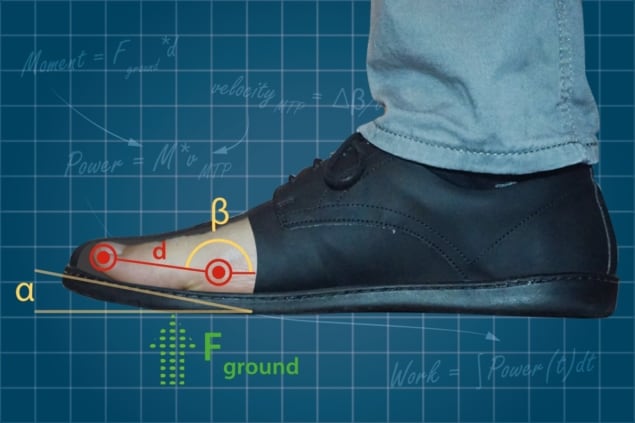
Most conventional running shoes have a “toe spring” – a gentle upward curve of the sole towards the tip of the shoe. While this makes stepping more comfortable and easier, Harvard University’s Daniel Lieberman, Oliver Hansen, Freddy Sichting and Nicholas Holowka have found that a toe spring can weaken the foot’s ability to push off the ground. This, they say, could be associated with a range of foot problems including plantar fasciitis – a painful condition affecting the tissue that connects the heel to the toes.
“We think that what happens is that people are relying on their plantar fascia to do what muscles normally do,” explains Lieberman. “When you get weak muscles and the plantar fascia has to do more work, it’s not really evolved for that, and so it gets inflamed.”
In their experiment, 13 participants walked barefoot and in four pairs of custom-made sandals on a treadmill equipped with force plates and an infrared camera system. You can read more about the team’s research in “Your shoes were made for walking. And that may be the problem”.
Enigmatic pitch
“The knuckleball is perhaps the most enigmatic pitch in baseball,” is the opening line of the abstract of a paper by Nicholas Nelson and Eric Strauss at California State University in Chico. The knuckleball pitch involves the slow rotation of the ball as it speeds towards the batter. Because a baseball has prominent seams that disrupt airflow around the ball, the aerodynamics of the ball changes as it rotates, which causes its trajectory to change repeatedly during flight. This makes it very difficult for the batter to anticipate the motion of the ball and hit it effectively. Conversely, it is also a very difficult pitch to throw because tiny changes in technique can have huge effects on outcome. Indeed, some pitchers say that identically thrown knuckleballs can take very different trajectories.
In their paper, Nelson and Strauss develop a model of the knuckleball and show the motion of the ball is chaotic. The duo’s model predicts that the position of the ball when it reaches the batter can vary by as much as 1.2 m for typical initial conditions used by knuckleball pitchers. This variation can take the ball well outside the strike zone (where the pitch must be), which illustrates why the knuckleball can be a dangerous choice for a pitcher.
You can read more in their paper “Dynamical chaos in a simple model of a knuckleball”.



